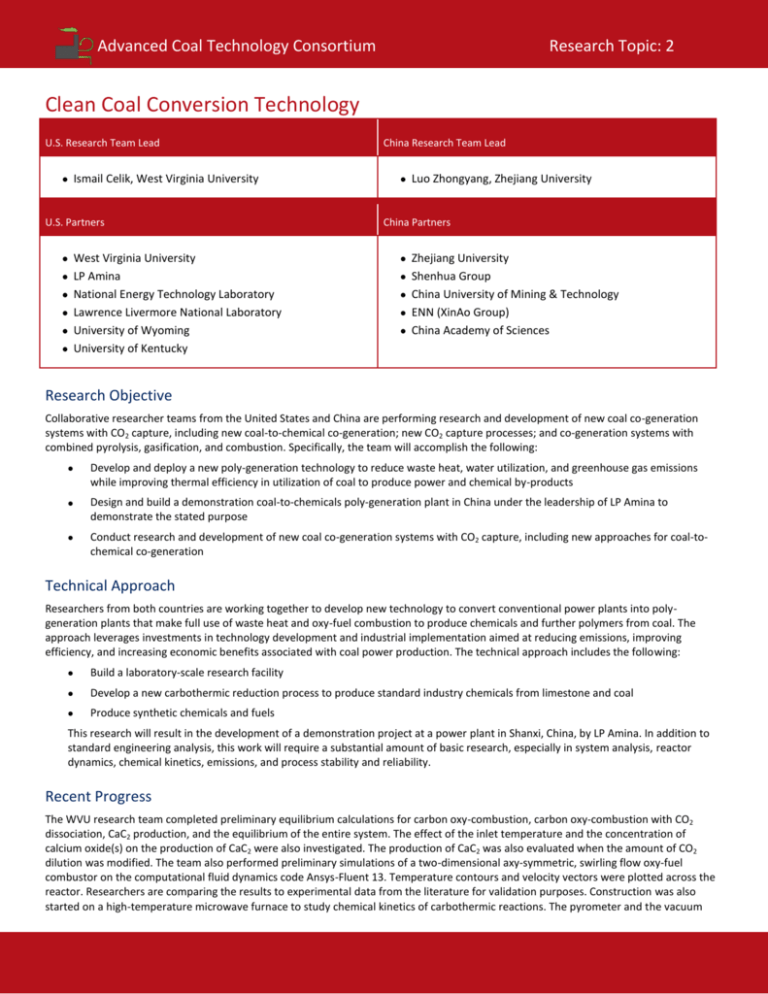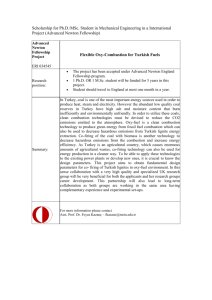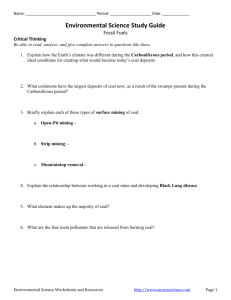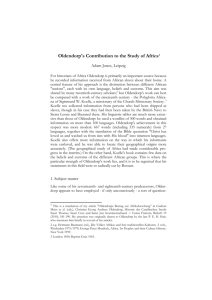Coal Conversion Technology - US-China Energy Center
advertisement

Advanced Coal Technology Consortium Research Topic: 2 Clean Coal Conversion Technology U.S. Research Team Lead Ismail Celik, West Virginia University U.S. Partners West Virginia University LP Amina National Energy Technology Laboratory Lawrence Livermore National Laboratory University of Wyoming University of Kentucky China Research Team Lead Luo Zhongyang, Zhejiang University China Partners Zhejiang University Shenhua Group China University of Mining & Technology ENN (XinAo Group) China Academy of Sciences Research Objective Collaborative researcher teams from the United States and China are performing research and development of new coal co-generation systems with CO2 capture, including new coal-to-chemical co-generation; new CO2 capture processes; and co-generation systems with combined pyrolysis, gasification, and combustion. Specifically, the team will accomplish the following: Develop and deploy a new poly-generation technology to reduce waste heat, water utilization, and greenhouse gas emissions while improving thermal efficiency in utilization of coal to produce power and chemical by-products Design and build a demonstration coal-to-chemicals poly-generation plant in China under the leadership of LP Amina to demonstrate the stated purpose Conduct research and development of new coal co-generation systems with CO2 capture, including new approaches for coal-tochemical co-generation Technical Approach Researchers from both countries are working together to develop new technology to convert conventional power plants into polygeneration plants that make full use of waste heat and oxy-fuel combustion to produce chemicals and further polymers from coal. The approach leverages investments in technology development and industrial implementation aimed at reducing emissions, improving efficiency, and increasing economic benefits associated with coal power production. The technical approach includes the following: Build a laboratory-scale research facility Develop a new carbothermic reduction process to produce standard industry chemicals from limestone and coal Produce synthetic chemicals and fuels This research will result in the development of a demonstration project at a power plant in Shanxi, China, by LP Amina. In addition to standard engineering analysis, this work will require a substantial amount of basic research, especially in system analysis, reactor dynamics, chemical kinetics, emissions, and process stability and reliability. Recent Progress The WVU research team completed preliminary equilibrium calculations for carbon oxy-combustion, carbon oxy-combustion with CO2 dissociation, CaC2 production, and the equilibrium of the entire system. The effect of the inlet temperature and the concentration of calcium oxide(s) on the production of CaC2 were also investigated. The production of CaC2 was also evaluated when the amount of CO2 dilution was modified. The team also performed preliminary simulations of a two-dimensional axy-symmetric, swirling flow oxy-fuel combustor on the computational fluid dynamics code Ansys-Fluent 13. Temperature contours and velocity vectors were plotted across the reactor. Researchers are comparing the results to experimental data from the literature for validation purposes. Construction was also started on a high-temperature microwave furnace to study chemical kinetics of carbothermic reactions. The pyrometer and the vacuum window have been purchased and are currently being installed. In September 2011, LP Amina signed an agreement with a Chinese power producer, GMIE, to build a poly-generation power plant using an innovative new technology development by LP Amina. The deal was developed under the U.S.-China CERC, and will enable a full-scale application of a technology that produces both chemicals and electric power. LP Amina has also completed its first demonstration project, a 100 MW unit in Shanxi, China. Expected Outcomes The implementation of poly-generation will reduce capital costs, greenhouse gas emissions, as well as plant maintenance costs of power generation sites. When paired with cleaner coal utilization with increased efficiency and minimal waste, poly-generation will be a costeffective, commercially viable option for reducing CO2 emissions in the power generation sector. It will also enable minimization of waste heat and/or materials. The LP Amina-GMIE plant would reduce greenhouse gases compared to conventional technology by more than 25%. Coal fired furnace Figure. (a) Temperature contours (in Kelvin), (b) temperature profile, and (c) velocity vectors (color represents magnitude in m/s) numerically obtained in an oxy-fuel combustor. Coal is being carried by carbon dioxide stream through the inner annular inlet and hot, swirling oxygen is entering through the outer annular region. The temperature profile shows a region of around 2.5m at high temperatures for carbothermic reactions to occur. Advanced Coal Technology Consortium Research Topic: 3








